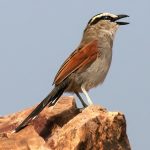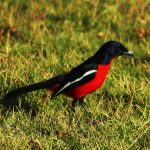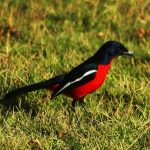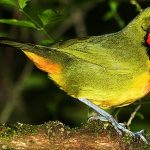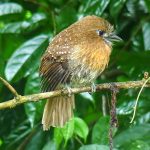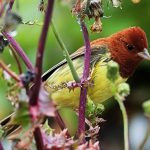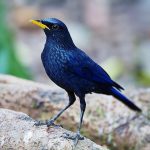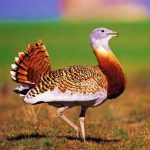Black-backed puffback

 |
| Photo by Daniel Loumeau (Flickr) |
Common name:
black-backed puffback (en); picanço-de-almofadinha (pt); cubla boule-de-neige (fr); obispillo de lomo negro (es); schneeballwürger (de)
Taxonomy:
Order Passeriformes
Family Malaconotidae
Range:
This African species is found from southern Kenya, central D.R. Congo and northern Angola, south to northern Namibia, northern and eastern Botswana, and eastern South Africa down to the Eastern Cape.
Size:
These birds are 16-18 cm long and weigh 19-36 g.
Habitat:
The black-backed puffback is mostly found in dry savannas, dry tropical forests and dry scrublands, also using riverine forests, the edges of moist tropical forests, alien Eucalyptus plantations and rural gardens.
Diet:
They forage on the upper canopy, mainly gleaning insects from the foliage, such as termites alates, beetles, ants and caterpillars, but also take fruits of Salvadora and Acacia buds.
Breeding:Black-backed puffbacks can breed all year round. The nest is built by the female, while the male helps collect material, consisting of a tidy, compact cup made of grass, roots and bark bound together with spider webs and lined with fine grass. It is often decorated with lichen and bark, and is bound to a fork in a tree branch. The female lays 2-3 white eggs with reddish-brown spots, which she mostly incubates alone for 13 days, while the male brings her food. The female feeds the chicks, with the male helping collect the food, and they fledge about 18 days after hatching. The young only become fully independent 3 weeks after fledging and remain in the parental territory until the next breeding season.
Conservation:IUCN status – LC (Least Concern)
This species has a very large breeding range and is reported to be frequent to common. The population is suspected to be in decline owing to habitat destruction.

